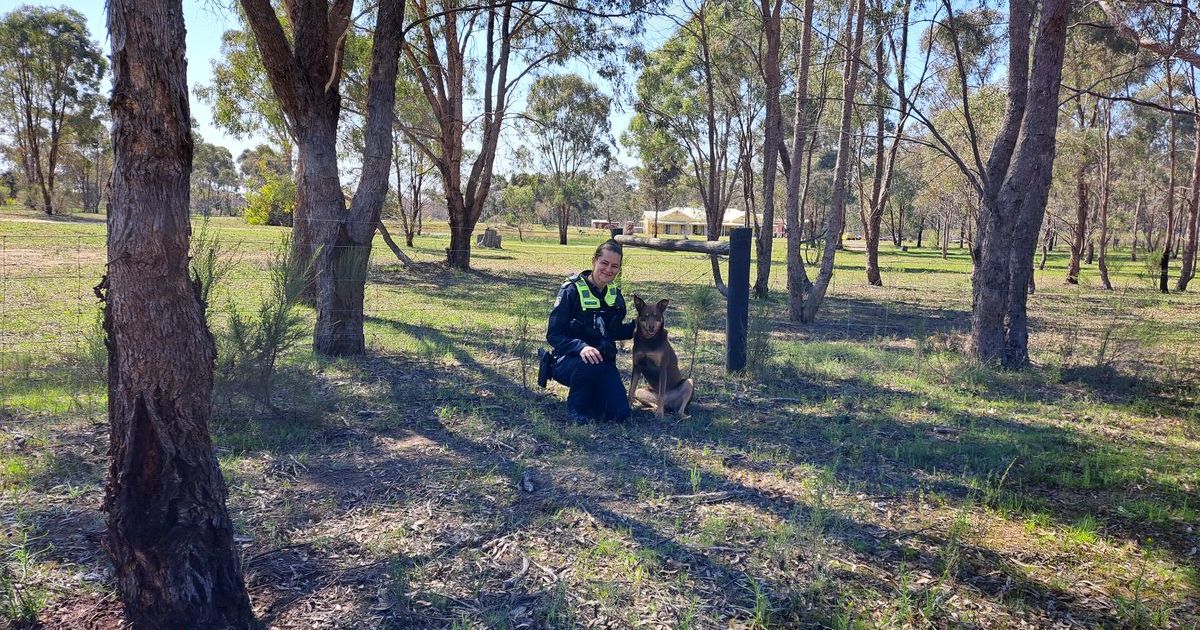Heathcote remembered part two

Stripped bare: This 1906 photo shows the effects of mining on the Costerfield landscape. Photo: FILE
IN NOVEMBER 1913 the McIvor Times published a short history of the Heathcote district.
This second extract mentions an 1853 robbery which netted thieves 2223 ounces of gold and £700 in cash when they overpowered an armed escort near Mia Mia.
It goes on to describe the shift from alluvial to underground mining and the various agricultural pursuits common in the area.
Along with viticulture, these activities remain the economic backbone of the region today.
Many stirring romances could be written in any review of the history of McIvor-Heathcote.
The most outstanding, perhaps, was the sticking up of the gold escort between the diggings and Mia Mia-some 12 miles to the west.
The escort used to make south through the Kyneton and Gisborne districts on route to Melbourne.
Many a hole yet half-filled and half open has associated with it a tale of success and happiness or of hard luck and despair.
For several years the alluvial workings kept the township active and prosperity was increased with successive discoveries on the outskirts.
For a while Graytown-18 miles out-had a population estimated at about 30,000.
Heathcote was then, as it is now, the centre for all those localities.
Graytown today is but a ruin of its former self, but it may soon again pulsate with the vigorous life peculiar to the successful goldfield.
Private syndicates are boring into the “web” or deeper leads with a view to the formation of companies.
When the alluvial on the McIvor Creek petered out some attention was given to the quartz reefs abounding in the hills.
Quartz mining was followed with varying success, and in some cases with good results, until a comparatively recent period.
Two of the last mines to close were the Alabama and Butler’s, in which Dr HL Atkinson, of Bendigo, had substantial interests.
Sinking got down to 500 feet and 600 feet, but there are yet many localities that would justify the attention of capital.
It is the lack of capital that has kept quartz-reefing in this district in the backward state.
It has been officially reported gold has been discovered in no fewer than 246 places throughout the district.
The material development of the Costerfield gold and antimony mine during the past five or six years, since it became the property of the English company, has been a boon to Heathcote.
There are about 170 men employed on the property, which is only eight miles out of Heathcote.
A number of the miners came from Bendigo, where their families continue to reside.
Speaking broadly, the rural holdings in the vicinity of Heathcote show a tendency to become aggregated, not in any one man’s hands, but under the control of individual families.
Successful men keep buying blocks for their sons.
Sheep farming is perhaps the most important factor, but a substantial quantity of oats and wheat is also grown.
Dairying, too, is conducted on a fairly extensive scale.
At one time a large amount of cheese was made by the families on Spring Plains, but with the sons and daughters gradually leaving the old roof tree, not so much cheese is now being produced.
There is a stationary population of about 1100 in the township, and the chances are more favourable for an increase than a decrease.
Heathcote has successfully withstood the shock of the decline in gold mining, and any turn in mining must now be for the better, and to the advantage of the township.
Heathcote is the centre of the Shire of McIvor. The township started its municipal career in 1859 as a borough, but joined the shire as the Central Riding in 1892.
Mr JD Thomas has been the secretary and engineer of the borough and shire for 27 years, having joined the shire as the officer of the borough.
The most important recent event in Heathcote was the turning on of the municipal electric lighting six weeks ago.
There are already 62 consumers, and it will not be long before the plant is taxed to its utmost capacity.


















